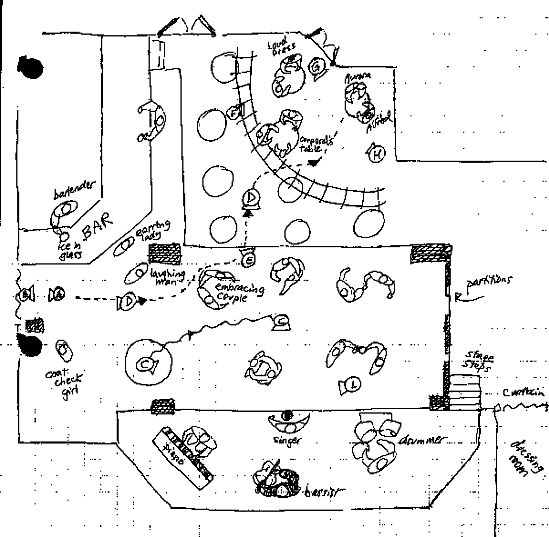 This style of board is very common in major film storyboards with some including captions and notes so the editor has a better idea of what's going on in the shot. However some storyboards are a little less detailed. These are called diagrammatical storyboards. Diagrammatical storyboards commonly use stickmen and very rough drawings of scenarios and are generally used in quick drafts before taking to a more detailed storyboard later on. However is not uncommon to use a diagrammatical storyboard as the final piece as in many cases there is just as much going on and the editor will still see everything that's going on with ease.
This style of board is very common in major film storyboards with some including captions and notes so the editor has a better idea of what's going on in the shot. However some storyboards are a little less detailed. These are called diagrammatical storyboards. Diagrammatical storyboards commonly use stickmen and very rough drawings of scenarios and are generally used in quick drafts before taking to a more detailed storyboard later on. However is not uncommon to use a diagrammatical storyboard as the final piece as in many cases there is just as much going on and the editor will still see everything that's going on with ease.
Another common example of a storyboard design is the plan view storyboard. This is where the scenario taking place is shown from a birds eye view and typically contains directions, for example where a car will drive to or what a character is moving towards. and some will even contain camera directions such as where the camera will be positioned, what shot type it will use and what camera movement will take place.
Some storyboards will even use photos and computer graphics to compile their storyboards and will even create an entire live action scene with animation in order to recreate everything they want in the final piece. To the left is an example of a storyboard created using photos for an advert and below is an example of an animated scene from Indiana Jones.



No comments:
Post a Comment